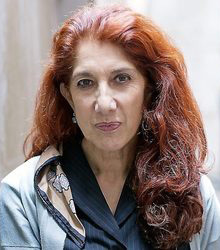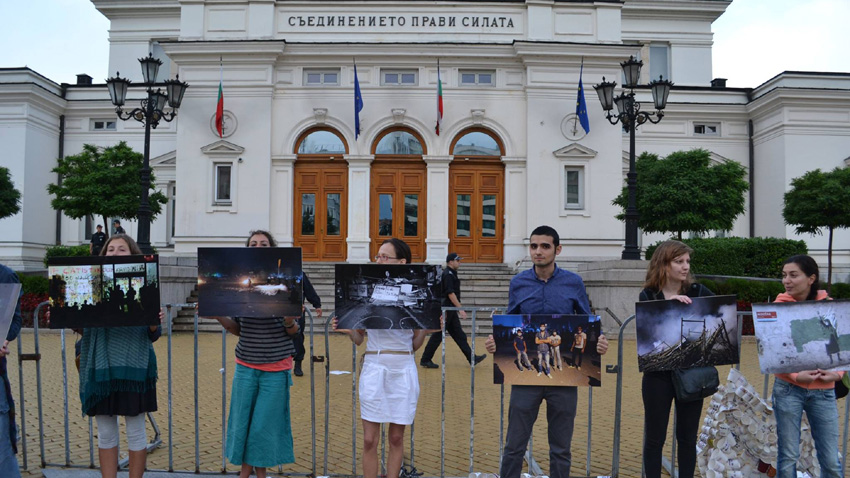What is the common thing between the protest movements in the Tahrir Square, the Maidan, the Gezi Park and Eagle’s Bridge downtown Sofia? The specifics of  these forms of protest and the way they are carried out on public spots is the key subject in the research of sociologist Nilüfer Göle, a professor at the leading French School for Advanced Studies in the Social Sciences, Paris. She has recently had a public lecture at Sofia University St. Kliment Ohridski. In the words of the professor everything from the political demonstrations across the Arab Spring, the Kiev Maidan to the protests in Bulgaria makes us reconsider the words public space, thinking over the new forms of mobilization. Parks, cafes and squares are defined as public space – everyone has access there. People gather to debate and exchange ideas on such spots, raising later the issues towards politicians.
these forms of protest and the way they are carried out on public spots is the key subject in the research of sociologist Nilüfer Göle, a professor at the leading French School for Advanced Studies in the Social Sciences, Paris. She has recently had a public lecture at Sofia University St. Kliment Ohridski. In the words of the professor everything from the political demonstrations across the Arab Spring, the Kiev Maidan to the protests in Bulgaria makes us reconsider the words public space, thinking over the new forms of mobilization. Parks, cafes and squares are defined as public space – everyone has access there. People gather to debate and exchange ideas on such spots, raising later the issues towards politicians.
Above all, today’s definition of public space is outdated, Prof. Göle underlines:
On the other hand, we live in the IT era. The Cairo protesters organized themselves via Facebook and Twitter, marginalizing state-owned and controlled private media. Police remained powerless in front of social networks. We are not talking here about the anonymous crowd of mass demonstrations. The global world now communicates face-to-face.
We witness the birth of neo-nationalist movements in Europe, different from the classic nationalism. They are a symbiosis of far-right ideas and the vocabulary of leftist secularism – for instance, Marine Le Pen in France. Authoritative regimes also use new technologies while trying to control the public sphere. They are constantly coming up with new measures for tightening of morality in public spaces.
Propaganda and the fight for the overwhelming interpretation of the events turn out to be decisive now. This is another type of propaganda, not like the communist one with a single source. The party of Erdogan tried to reach an agreement with the protesters first. After its failure, it came up with the version on an international conspiracy against the Turkish government.
These movements have another feature – they avoid confrontation. They do not consist of professional political demonstrators – photos show their inaptitude, regarding the clothes, they do not how to react and art tools mainly express their ideas.

Asked about any similarities with the social movement from May 1968 in France and on the potential of contemporary protests for participation in representative democracy, Prof. Göle answered:
English version: Zhivko Stanchev
Photos: private archive and Miladina Monova"Folklore is a need for humans and this need will not disappear just like that, " says Assoc. Prof. Dr. Natalia Rashkova - ethnologist and folklorist, university lecturer and researcher with a strong contribution to the study of..
Researchers from Bulgaria and abroad are gathering in Sofia for a scientific conference. The forum will be held on October 16 and 17 in the building of the Institute of Ethnology and Folklore Studies with Ethnographic Museum at the..
The Sofia Zoo has a new resident – an 11-year-old male snow leopard, BNT has reported. He comes from Nordens Ark Zoo, located in Bohuslän, Sweden and is named Araatan. Some time ago, a female leopard arrived from the Helsinki Zoo,..
At 04:00 Bulgarian time on October 26, 2025, we must turn our clocks back one hour. This means one more hour of sleep, but it..
The cool autumn evenings give us a reason to immerse ourselves in the cosy atmosphere of restaurants in Sofia and try new flavours..

+359 2 9336 661
